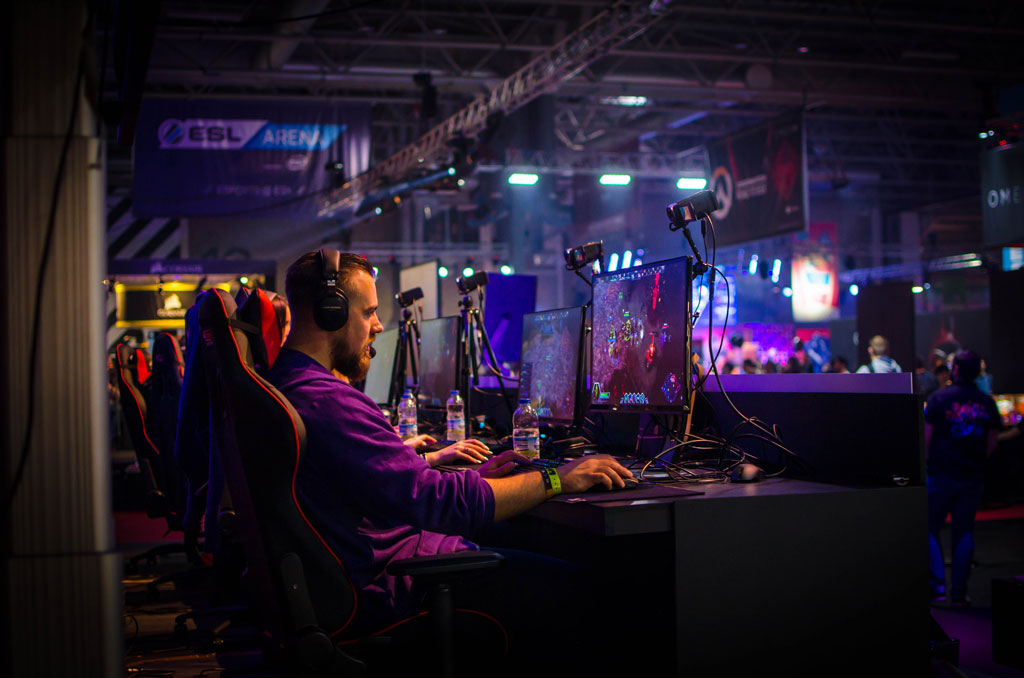From the early days of online gaming, people have loved the option to play against robot characters in multiplayer. Decades on, bots are making a comeback, but smarter and trickier than ever.
Bots of all types are big news. Chatbots appear in apps and websites to help customers, sell products or save business time. Virtual assistants in phones, home speakers and smartwatches do our bidding. Virtual agents are, or soon will, talk to other agents and do business with no human involvement. Alongside this growth, their use in games has shadowed that wider development.
Fortnite is the most popular game in the world right now approaching 50 million players, spread across 100-player battles to be the last one standing. With a little bit of construction and team modes, it is hugely popular with all ages. But just a few years ago, 100 players in a world was a mad dream.
When Gaming Was Doomed
Doom started the multiplayer, network-gaming craze in the early nineties. But network lag and poor or no broadband, meant players often preferred sessions against PC-controlled characters, especially when the bosses were trying to figure out where all the office network bandwidth was going. While they were in no sense AI characters, these bots let anyone play “online” games, anytime.
Over the years, multiplayer made the move to full 3D in Quake and Unreal. Then games like Team Fortress added features like modifications and more complex game rules, building the groundwork for the likes of Call of Duty and building demand for bots for offline modes as the games become more “online-only” experiences.
Over time, this solidified network gaming as a massive trend, with huge LAN tournaments that morphed into today’s esports. PC hardware got faster, and games got better looking. Consoles caught up with over time and now, we’re at a point where fast broadband means 100 or more players can play in the same game, usually within the same continent to keep lag down.
But AI isn’t just about shooters, Peter Molyneux’s legendary Black and White unleashed AI gods on a changing landscape. The AI’s developer Demis Hassabis went on to gain a PhD in cognitive neuroscience and founded the company DeepMind. Its aim is to use AI to solve the world’s problems and the company was acquired by Google in 2014.
The Trouble With Online Only
But, with shooter games making the headlines, no matter how fun or realistic, with those masses of players comes complaints about abusive language, unfair play and outright cheating. With younger gamers now getting involved in online games through PlayStation and Nintendo Switch consoles, there’s a wide variety of age and talent that can see core gamers looking for better opposition and families somewhere safe for their kids to play.
All of which sees bots making a comeback for a number of reasons. For handheld games like Killzone Mercenary on the PS Vita, players didn’t always have a good WiFi connection, so bots helped them could continue their online play.
For children, the bots can be set at varying levels of skill, allowing kids to enjoy the games that all their friends are talking about, without the exposure to elite players or harsh language. And, conversely, good players can practice on their own against the best of the bot world, when their squad is offline and the lobbies are full of newbies.
Bots aren’t just limited to shooters, they can appear in fun games like the Worms series, fantasy games and more. PC Gamer has a good list for starters. Dawn of the Ancients is a compelling fantasy game that challenged bots to understand new rules and play with limited information. Here, the AI is really tested and was trained for 180 man-years on a daily basis to learn how to play and compete against those pesky human players. Even so, there are limitations in place to make it easier for them.
Rise of the Bot Army
While Fortnite doesn’t need bots, thanks to its massive popularity, some gamers claim that Epic Games deploys them to fill out servers. And, while a growing number of games are happy to throw in some casual bots, other developers are taking the effort seriously, with the likes of Tripwire’s Rising Storm 2 allowing bots into its 64-player dynamic campaigns that see helicopter crews supporting US troops fighting the North Vietnamese.
Given the game has the following multiplayer ambitions, that’s a lot for a bot to get involved with and master.
- Allow players to fight anywhere on the map at any given moment.
- Make sure that players on all levels (regular/squad leader/commander/pilot) can make tactical decisions which impact the wider battle.
- Allow combat to happen from multiple fronts and directions.
- Allow gameplay to be unpredictable, but remain team-based, even if players are not close to teammates.
- Allow strong squad-based gameplay, but with each squad contributing to the wider battle.
Read more about the complexities of the multiplayer here. Even so, mimicking the use of bots in business and other areas of life, some Rising Storm 2 users support the idea, others are up in virtual arms about it. Some claim it ruins the pure multiplayer elements of desire and grit. Others say it is a practical necessity for when the game is less popular and the servers are slow to populate.
For those that want to play solo with Bots, they add a new dimension to the game, and while their intelligence might be questionable, this is something developers will be addressing in all games in coming years.
Wider Use of AI in Games
The Spectrum Retreat is a recent puzzle game that does impressive things with AI. Described as “A milestone in emotional, intelligent narrative adventure, especially for anyone interested in how new technologies might impact our lives very soon.”
In the game, The Penrose Hotel is controlled by an AI, as we are starting to see in Japan, where robotic and autonomous services are replacing staff. As a valued guest, your existence is embedded into the corridors and guest rooms of The Penrose. Through exploration of the striking art-deco hotel you will begin to uncover mysteries and puzzles.
It might only be a five-hour long game, but hotels and hospitals could soon look a lot like this, without the overtones of menace, hopefully.
As AI systems become smarter, and just a cloud service that any developer can access without needing to write their own code first, the opportunity for smarter games grows. If you want to see where AI can go, read this interview with Brandon Franklin, a design engineer at VR studio, Vrainium. He highlights ways that developers can make better games:
Quick Rules for Making Better AI:
- Construct simple rules to build your game systems on
- Make the AI play by the same rules as the player
- Create open gameplay systems that don’t interact in a rigid way
- Let your AI characters create and drive the content of your game
- Make things consistent so players can use their intuition to solve problems
- Don’t artificially limit what your AI can do
When applied to game systems in the future players will find it harder to distinguish between bot and human players. We will appreciate having AI support in games to help us learn or improve, without ruining the game or requiring deep dives into manuals or tutorial YouTube videos.




